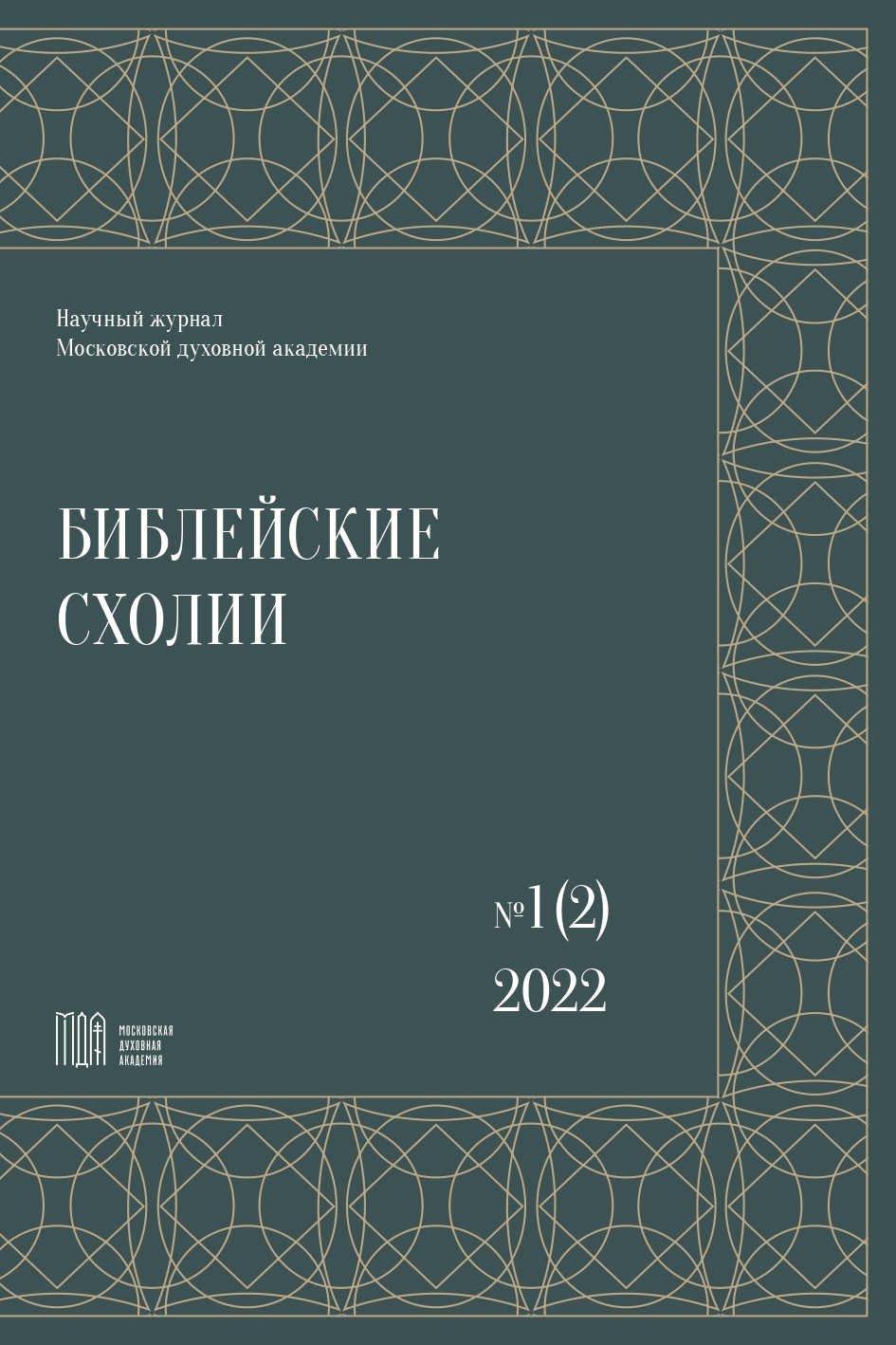Reflection of the Symbolism of the Vestment of the Old Testament High Priest in the Description of Heavenly Jerusalem
DOI:
https://doi.org/10.31802/BSCH.2022.2.1.006Keywords:
ephod, amice, urim, tummim, biblical minerals, tribes of Israel, stones of Heavenly JerusalemAbstract
The article is devoted to the analysis of the correspondences between the two biblical texts. One of them is the book of Exodus (28, 15–21), which indicates the minerals with which the prophet Moses, according to God’s command, should decorate the elements of the high priest’s vestments, an ephod and an amice. These precious stones should be twelve according to the number of the tribes of Israel. Another text is the Revelation of St. Apostle John the Theologian (21, 19–20). It describes the twelve stones that make up the foundation of the Heavenly Jerusalem. The question about «Urim and Thummim» is also considered, which is also related to the Old Testament cult. The following conclusions were drawn from the analysis: 1. The Jewish biblical tradition, more accurately than the Slavic translations, traces the presence of the tribes of Israel in the mysteries of New Jerusalem. 2. The text of the Holy Scriptures reflects the historical changes in the names of many stones, as well as the transfer of names from one mineral to another. This conclusion can be useful not only for biblical exegesis, but also for the history of mineralogy and natural science in general, opens the prospect of historical and cultural research.
Downloads
References
Андрей Кесарийский, свт. Толкование на Апокалипсис. М.: «Отчий дом», 2000.
Раши. Комментарии на Книгу Исход. [Электронный ресурс]. URL: https://docviewer.yandex. ru/view/40906616/?page=182&*=zWkrxkd%2Bv3sttk5gDx8SPX6wrmp7InVybCI6InlhL WRpc2stcHVibGljOi8vNE5nQUJQWW1oN2hONzgyd1F4MStrN3l5Z2UrcDQyR242NFV KZ3RKalg2ND06LzA2INCY0YPQtNC10LnRgdC60LjQtSDRgtC%2B0LvQutC%2B0LLQs NC90LjRjy8yINCg0LDRiNC4INCY0YHRhdC%2B0LQuZGp2dSIsInRpdGxlIjoiMiDQoNC w0YjQuCDQmNGB0YXQvtC0LmRqdnUiLCJub2lmcmFtZSI6ZmFsc2UsInVpZCI6IjQwO TA2NjE2IiwidHMiOjE2MDI2OTEwMzUwODQsInl1IjoiNDI3MjMwNzkyMTUxNDE5ND QzOCJ9 (дата обращения 23.09.2020).
Творения святаго Епифания Кипрскаго. Ч. 6. М.: Тип. В. Готье, 1885.
Рупова Р. Кастальский ключ. СПб.: Алетейя, 2017.
Толковая Библия. Ветхий Завет в 5 тт. Т. 1: Пятикнижие; Исторические книги / под ред. А. П. Лопухина. М.: ДАРЪ, 2008.
Энциклопедический словарь Ф. А. Брокгауза и И. А. Ефрона: в 86 т. Т. 34. СПб.: Тип. Акц. Общ. Брокгауз-Ефрон, 1902.
Downloads
Published
How to Cite
Issue
Section
Categories
License

This work is licensed under a Creative Commons Attribution-ShareAlike 4.0 International License.






